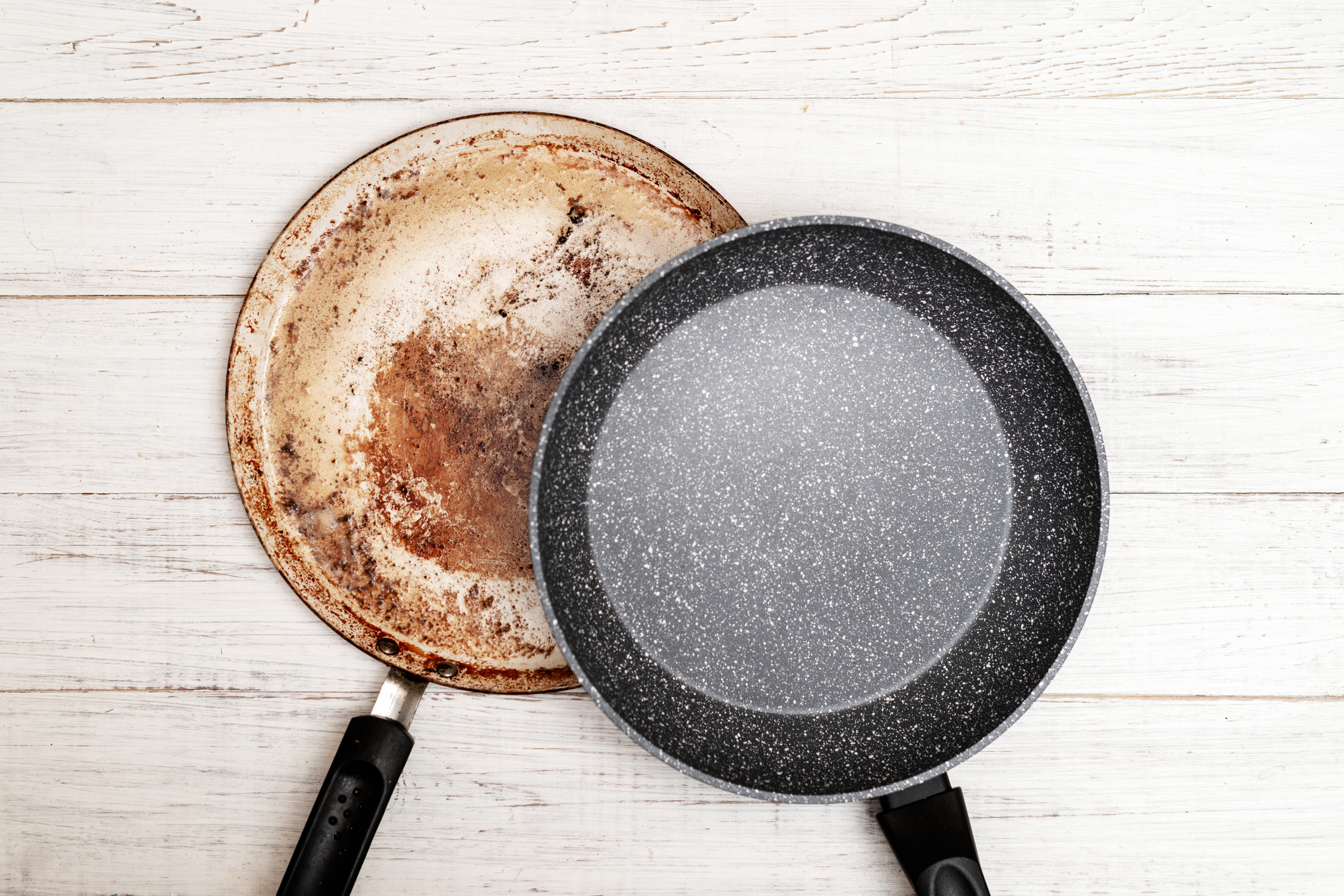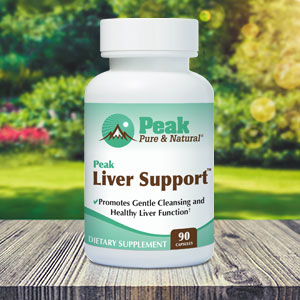Get Easy Health Digest™ in your inbox and don’t miss a thing when you subscribe today. Plus, get the free bonus report, Mother Nature’s Tips, Tricks and Remedies for Cholesterol, Blood Pressure & Blood Sugar as my way of saying welcome to the community!
Worn-out non-stick cookware: Not just ugly — but toxic

Teflon has been around since 1938 when a scientist at DuPont discovered a frozen sample of refrigerant gas had formed a solid mass with incredibly slippery properties.
A few years later in the 1950s, the product chemically known as polytetrafluoroethylene (PTFE) became best known for its use as a nonstick coating on cookware. At the time, housewives thought they were the best thing since sliced bread.
That popularity has been long-lived. Today you can probably find at least one PTFE-coated pan in every kitchen in the U.S.
But we’re learning the convenience of making perfect omelets (and the easy cleanup) comes with a hefty price — one that especially hits home if you’re cooking with worn-out pans…
Convenient but not so healthy
The companies that make PTFE and the pots and pans that are Teflon-coated insist that this chemical is safe for use in cooking. After all, they stopped using one problematic chemical in the mix, perfluorooctanoic acid (PFOA), in 2002.
But investigators are finding the truth may not be that simple. These manmade substances are known as “forever chemicals” because they never degrade in the environment, and end up contaminating our water, soil, air and even our food.
And that’s not good news. PFAS have been linked with conditions like high blood pressure, celiac disease, liver damage and decreased fertility and can raise your risk of diabetes, obesity, asthma and thyroid disease.
The makers of the cookware say that as long as the pots and pans are used correctly, the coating should remain intact on the pan, rather than entering our bodies. That means keeping the temperature below 500 degrees Fahrenheit and using tools that won’t scratch or break the nonstick surface.
But all it takes is one small crack and you have big problems…
A side of plastic particles with every meal
Even if you do everything right, nonstick pans eventually wear out. Their shelf life is estimated at anywhere between 3 to 7 years, depending on use and care. One study estimated an even shorter use-by date — 2.3 years from time of purchase.
And let’s face it — not many of us replace pans that often. Cookware is expensive, and we tend to use it until it’s clearly not working anymore. I’m guilty of using one skillet for 12 years before discarding it for ruining one too many omelets.
This is something we should rethink. Investigators now know that nonstick cookware gradually loses its coating. And as this happens, tiny plastic particles are released into the food cooked in them.
Scientists from Newcastle University and Flinders University have been able to measure how many of these particles are being released. And it’s not an insignificant number: one surface crack on a Teflon-coated pan can release about 9,100 plastic particles.
And when measuring on a micro-scale using a special type of imaging, they have identified the release of as many as 2.3 million microplastics and nanoplastics from broken coating within 30 seconds of cooking.
“Given the fact PFAS is a big concern, these Teflon microparticles in our food might be a health concern so needs investigating because we don’t know much about these emerging contaminants,” says University of Newcastle researcher Dr. Cheng Fang. “
What to use instead
So, what to do about our nonstick cookware? If you truly want to ensure you’re not leaching tiny PTFE fragments into your food, it’s best to replace your Teflon-coated pots and pans with cookware that uses a healthier nonstick surface.
More and more people are choosing to go with the old-fashioned cast iron skillet, which develops a natural nonstick coating after regular use. Unlike Teflon cookware, cast iron can be used on the stovetop and in the oven with no worries about high heat. As a bonus, cast iron enriches your food with iron, a mineral that’s essential for good blood health.
As long as you properly care for your cast iron skillet, it should last you for decades. Lodge has a great guide to caring for cast iron here.
Two other options are ceramic-coated cookware, which is safe and nonstick, and anodized aluminum cookware, which resists corrosion and scratches. Just remember when using anodized aluminum pots and pans to employ tools that won’t scratch the protective coating on its surface, or else aluminum might leach into your food.
Editor’s note: Have you heard of EDTA chelation therapy? It was developed originally to remove lead and other contaminants, including heavy metals, from the body. Its uses now run the gamut from varicose veins to circulation. Click here to discover Chelation: Natural Miracle for Protecting Your Heart and Enhancing Your Health!
Sources:
Not-so-tough Teflon — Flinders University
One Small Crack on a Teflon Pan Can Release Thousands of Plastic Particles — Science Alert
Raman imaging for the identification of Teflon microplastics and nanoplastics released from non-stick cookware — Science of The Total Environment
The History of Teflon Fluoropolymers — Teflon
Roy J. Plunkett — Science History Institute
Chemistry History: Teflon & Non-Stick Pans — Compound Interest














